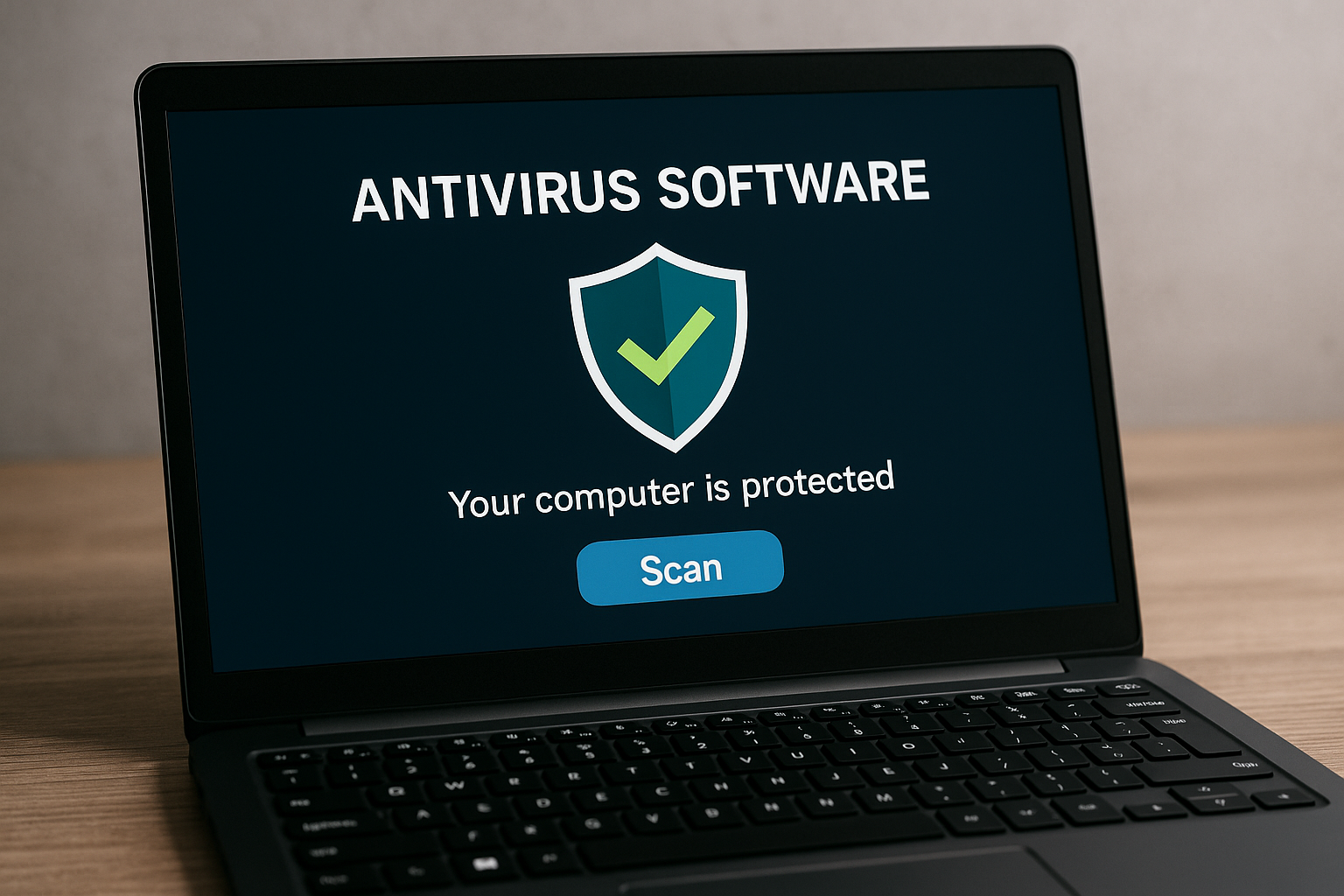In today’s world, where technology is deeply embedded in our personal and professional lives, ensuring that our devices and systems are running smoothly is essential. Whether it’s your smartphone, laptop, or even a smart refrigerator, updates play a crucial role in maintaining the efficiency and security of these devices. This is particularly true for software and firmware updates, which are often overlooked but vital for the optimal performance of any technology.
In this article, we will explore the importance of keeping your software and firmware up to date, the risks of ignoring updates, and practical tips on how to manage them effectively.
What Are Software and Firmware Updates?
Before diving into the reasons for keeping these updates current, it’s important to first understand what software and firmware updates are and how they differ from one another.
Software Updates
A software update refers to modifications made to an application or operating system (OS) to improve functionality, fix bugs, enhance security, and sometimes introduce new features. These updates are often downloaded and installed via the internet. Examples of software that require regular updates include web browsers (like Google Chrome or Firefox), operating systems (like Windows, macOS, or Android), and applications (like Microsoft Office or Adobe Creative Suite).
Software updates often include both functional improvements (such as added features or enhanced performance) and security patches (which fix vulnerabilities that could otherwise be exploited by cybercriminals). These updates are typically easy to implement and don’t require much technical know-how.
Firmware Updates
Firmware, on the other hand, refers to the software embedded directly into the hardware of a device. It acts as the intermediary between the hardware and software, telling the device how to operate. Firmware updates are typically less frequent than software updates but are just as critical. They can improve hardware functionality, fix bugs, or enhance performance. Common devices that require firmware updates include routers, printers, smartphones, and smart TVs.
While firmware updates are typically more complex and involve more intricate technical steps, they can significantly improve a device’s performance and longevity. Ignoring firmware updates can lead to hardware malfunctions or poor device performance.
Why Software and Firmware Updates Matter
Now that we’ve established what software and firmware updates are, let’s look at why they are so important. Keeping your devices up to date is not just about ensuring they function properly—it’s also about protecting your data and enhancing the overall user experience.
1. Enhanced Security
One of the most important reasons for updating software and firmware is to protect your devices from security vulnerabilities. Cybercriminals are constantly discovering new ways to exploit weaknesses in outdated software and firmware. These vulnerabilities can leave your devices open to malware, data breaches, or hacking attempts.
Software and firmware updates frequently include security patches that fix these vulnerabilities. Ignoring updates puts your devices at risk and makes them a prime target for cybercriminals. A failure to update could expose your devices to phishing attacks, ransomware, and other malicious threats that could compromise your sensitive information.
Example: The WannaCry ransomware attack, which affected hundreds of thousands of devices worldwide in 2017, was able to spread because many organizations had not updated their systems with the critical security patch released by Microsoft. This highlights how important it is to stay on top of updates, particularly those related to security.
2. Bug Fixes and Improved Stability
No software or device is perfect, and bugs are inevitable. These bugs can lead to performance issues, crashes, or errors that hinder your productivity. By keeping your software and firmware updated, you ensure that these bugs are addressed promptly.
Whether it’s an operating system bug causing your computer to freeze or an issue with your phone’s camera software, updates often come with fixes that resolve these annoyances. Firmware updates can also help improve the performance of hardware components, such as network stability on routers or battery life on smartphones.
Example: Many smartphone manufacturers periodically release firmware updates to improve battery performance or resolve issues with Bluetooth connectivity. By ignoring these updates, you may experience poor performance or even device failure. Similarly, outdated router firmware may result in slower speeds or connection drops, which can be fixed with an update.
3. New Features and Enhancements
In addition to security and bug fixes, updates often bring new features and enhancements that improve the user experience. Software developers continuously work to enhance the functionality of their products, and updates are the way they deliver these improvements to users.
Example: A major update to your phone’s OS might introduce new camera features, improved facial recognition, or enhanced AI-driven performance. Software updates for apps might introduce a new interface, better functionality, or integration with other services.
These features can significantly improve your daily use of a device. For instance, you may find that a new update for your phone’s camera app introduces better editing tools, making your photos look even more professional. Similarly, operating system updates might include new design features that enhance usability and aesthetics.
4. Better Compatibility
As technology evolves, newer devices and software applications are often optimized for the latest updates. If you don’t keep your software and firmware current, your devices may become incompatible with new apps, services, or peripherals. This can limit the overall usefulness of your device and make it harder to integrate with other technology.
Example: A newer version of a video editing app may require a certain version of an operating system to function properly. Without an update, the app may not run correctly, or you might miss out on the latest features. Similarly, if you haven’t updated the firmware on your printer, you may not be able to connect it to the latest versions of your operating system.
5. Improved Device Longevity
Updating your software and firmware regularly can also extend the life of your devices. Manufacturers often release updates that enhance the functionality and performance of hardware components, which can slow down over time if not properly maintained.
Example: By updating the firmware on a smart thermostat, you may notice better energy efficiency or faster response times. Similarly, a phone’s battery management system might be optimized through software updates, prolonging battery life.
Risks of Ignoring Software and Firmware Updates
While it may seem tempting to skip software and firmware updates to avoid interruptions, this practice can lead to several long-term problems. Let’s look at the potential risks of ignoring updates:
1. Security Threats
As mentioned earlier, failing to update your software leaves your devices vulnerable to cyberattacks. Hackers often target outdated software with known exploits, knowing that many users have failed to install the necessary security patches. This could lead to data breaches, identity theft, and even the compromise of personal information.
Example: A popular web browser may release an update to patch a security vulnerability. Without installing the update, you risk exposing your data to malicious websites or cybercriminals who can take advantage of this gap.
2. Performance Issues
Old software and firmware can start to lag or experience bugs as they become outdated. Devices may run slower, apps may crash, or hardware may not function as expected. For example, firmware bugs on a router can result in poor Wi-Fi connectivity, while outdated smartphone software might lead to frequent crashes or slow performance.
Ignoring updates can result in a degraded user experience. Instead of enjoying the full capabilities of your device, you may be left with frequent issues that hamper productivity and enjoyment.
3. Incompatibility Problems
Outdated software might not be compatible with new devices, services, or peripherals. For instance, you might buy a new printer that requires the latest drivers, but if your computer is running outdated software, you might struggle to get it to work.
Example: If your operating system isn’t updated to the latest version, you may find that newer apps or software programs no longer function on your device. This can make your technology feel obsolete, even if the hardware is still in good condition.
4. Missed Opportunities for New Features
By neglecting updates, you miss out on new features and enhancements that could significantly improve your user experience. Whether it’s improved app functionality, a better camera interface, or a more efficient operating system, skipping updates means you won’t benefit from the latest improvements.
Example: A new operating system update might include performance enhancements that make your device run smoother, or it could introduce new tools like enhanced privacy features, which you wouldn’t get without updating.
How to Keep Your Software and Firmware Updated
Now that we’ve covered the importance of software and firmware updates, let’s talk about how to manage and implement them effectively.
1. Set Up Automatic Updates
One of the easiest ways to ensure your devices stay updated is by enabling automatic updates. Most modern devices and software offer this feature, allowing updates to be installed in the background without manual intervention. This ensures you never miss a critical update and can go about your work without worrying about updates slowing you down.
2. Check for Updates Regularly
While automatic updates are great, it’s still important to check for updates manually from time to time. This is especially true for firmware updates, which may not always be pushed automatically. For example, a router’s firmware might need to be updated via the manufacturer’s website, or a smart TV might require a manual update to fix issues or add new features.
3. Create Backups Before Updating
Before performing any updates, especially firmware updates, it’s always a good idea to create a backup of your important data. While updates generally improve performance, there’s always a small risk that something could go wrong during installation. By backing up your data, you ensure that you won’t lose anything if an update causes issues.
4. Stay Informed About Updates
Many device manufacturers and software companies post about the latest updates on their websites or social media channels. Stay informed about the latest changes and improvements, and make sure you understand what each update brings to the table. This will help you determine which updates are essential and which ones can wait.
Conclusion
In today’s fast-paced technological world, keeping your devices up to date is essential not only for optimal performance but also for ensuring your security and the longevity of your devices. Software and firmware updates are crucial for fixing security vulnerabilities, resolving bugs, adding new features, and improving compatibility. Ignoring these updates can expose you to potential threats, performance issues, and incompatibilities that could affect your productivity and overall experience.
While the process of updating software and firmware may seem like a minor task, it plays a pivotal role in maintaining a smooth, secure, and efficient digital experience. Setting up automatic updates, checking for updates regularly, backing up important data, and staying informed about the latest changes are simple steps you can take to protect your devices.
Remember, technology evolves rapidly, and staying updated is one of the best ways to future-proof your devices, ensure security, and continue enjoying the latest features. Whether it’s a smartphone, computer, or smart appliance, regular updates will help you get the most out of your technology and keep it functioning at its best.



















